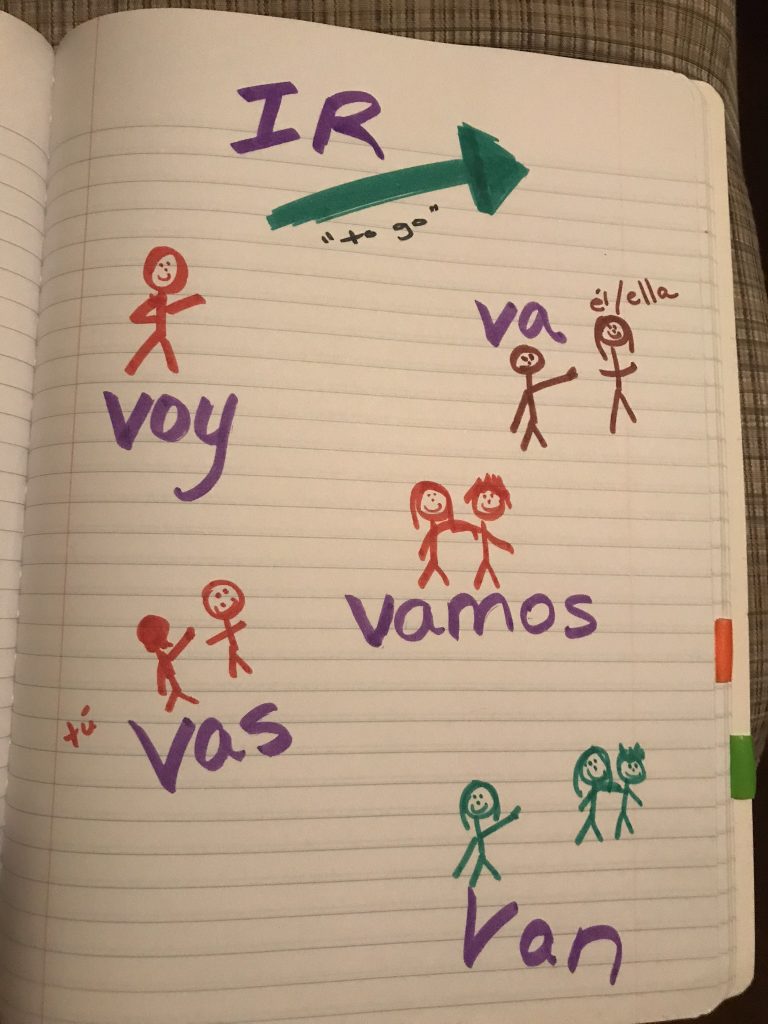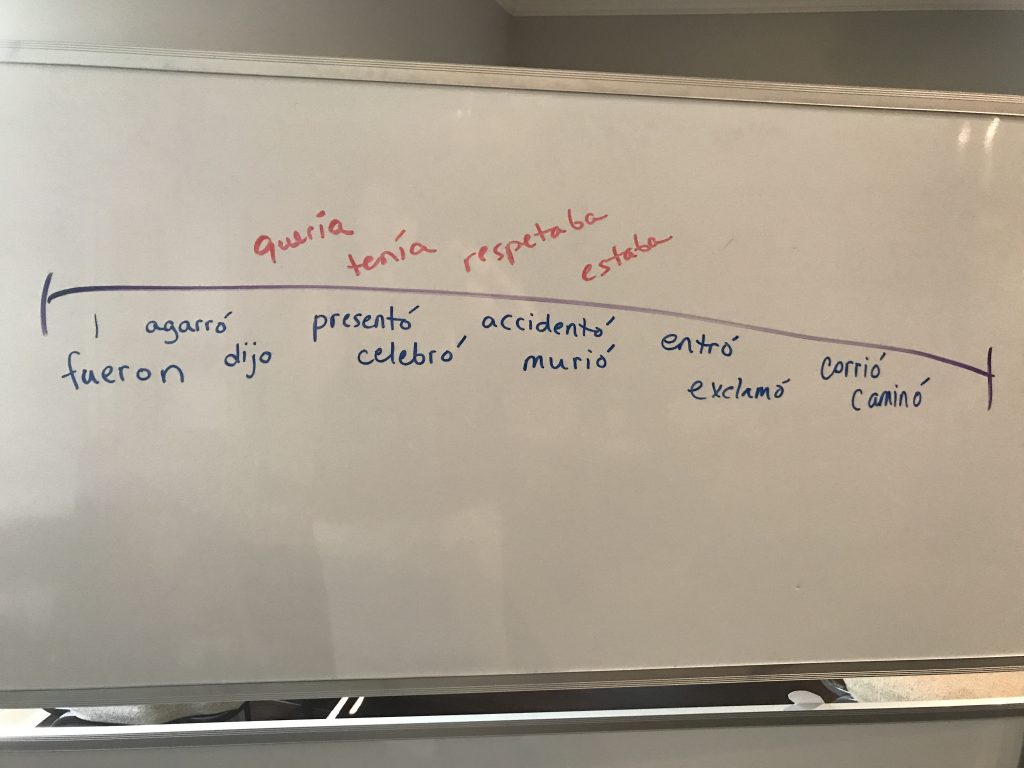Verb charts are a core piece of world language curriculum.
Aren’t they?
I suppose they are, but I’m not sure why. Perhaps it’s because we know that visual organizers can work well for learning, and so someone once put the verbs in a chart in a certain order, and then it just got reproduced that way. Over and over. And over.
In my session (today) at the Foreign Language Association of North Carolina’s fall conference, we talked about what verbs are and aren’t, and how to break free from the charts (mostly).
What verb endings are and aren’t
One of my points all day today has been founded in this quote from 16th-century physician Paracelsus:
The poison is in the dose.
That’s how I feel about a focus on accuracy, including verb endings.

So, in the area of verbs, verb endings are:
- an important part of language structure.
- about communication.
- about comprehensibility.
Verb endings are not:
- the source of most comprehension problems (that’s vocabulary).
- about any particular order (-0, -as,- a, etc.)
- what ends up in the learner’s head (Bill Van Patten).
Visualizing power verbs without a verb chart
Summary: Students benefit when we direct their attention and focus to the verbs most used for communication. For great lists of such verbs, see here where Cecile shares Terry Waltz’s Super Seven, and here where Mike Peto expands them to the Sweet Sixteen.
In my classes, as we encounter these “power verbs,” we diagram them in a notebook section to help students see the differences. We don’t separate the ending from the stem, we always include a symbol, we only include (tiny) English to define the verb, and we don’t put the stick figure illustrations in any particular order. We don’t do them all in one day, but rather as they come up in the input, and we use the same stick figures for every verb with that subject.

Structuring input for noticing patterns
Whether or not the noticing hypothesis is true is up in the air (yes, it is, still) but I confess I really, really hope it’s true. I find patterning and color-coding those patterns in the input to be the most attractive way to battle our time problem, how much time acquisition takes in hands-off exposure to non-patterned input.
In any given story, I usually target one or two particular verb forms, and we categorize them on the board, using color changes to highlight the verb endings.

Structuring output for noticing patterns
Then, I ask my students to do something with the input. Sometimes it’s to complete a similar story by filling in details (but I provide verbs). Sometimes it’s by using the structure in a Linguacafé conversation activity (but I provide the verbs).
Timeline approach when contrasting tenses
Finally, when introducing not just subjects but also tenses, I use a timeline approach to storytelling. When we read novels or news articles or whatever, we draw a timeline of the events, and categorize descriptive verbs above and sudden verbs below.

Ready to try this yourself? Find a template as the last page in the session handout.
Here are the slides (sorry if there’s wonky formatting in the upload):
1 Comments
Comments are closed.





[…] I love this post of Sara-Elizabeth’s on breaking free from the verb chart. […]